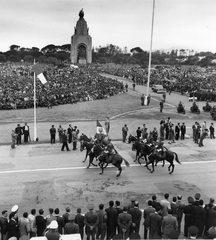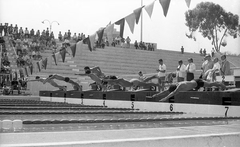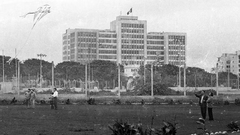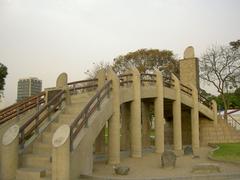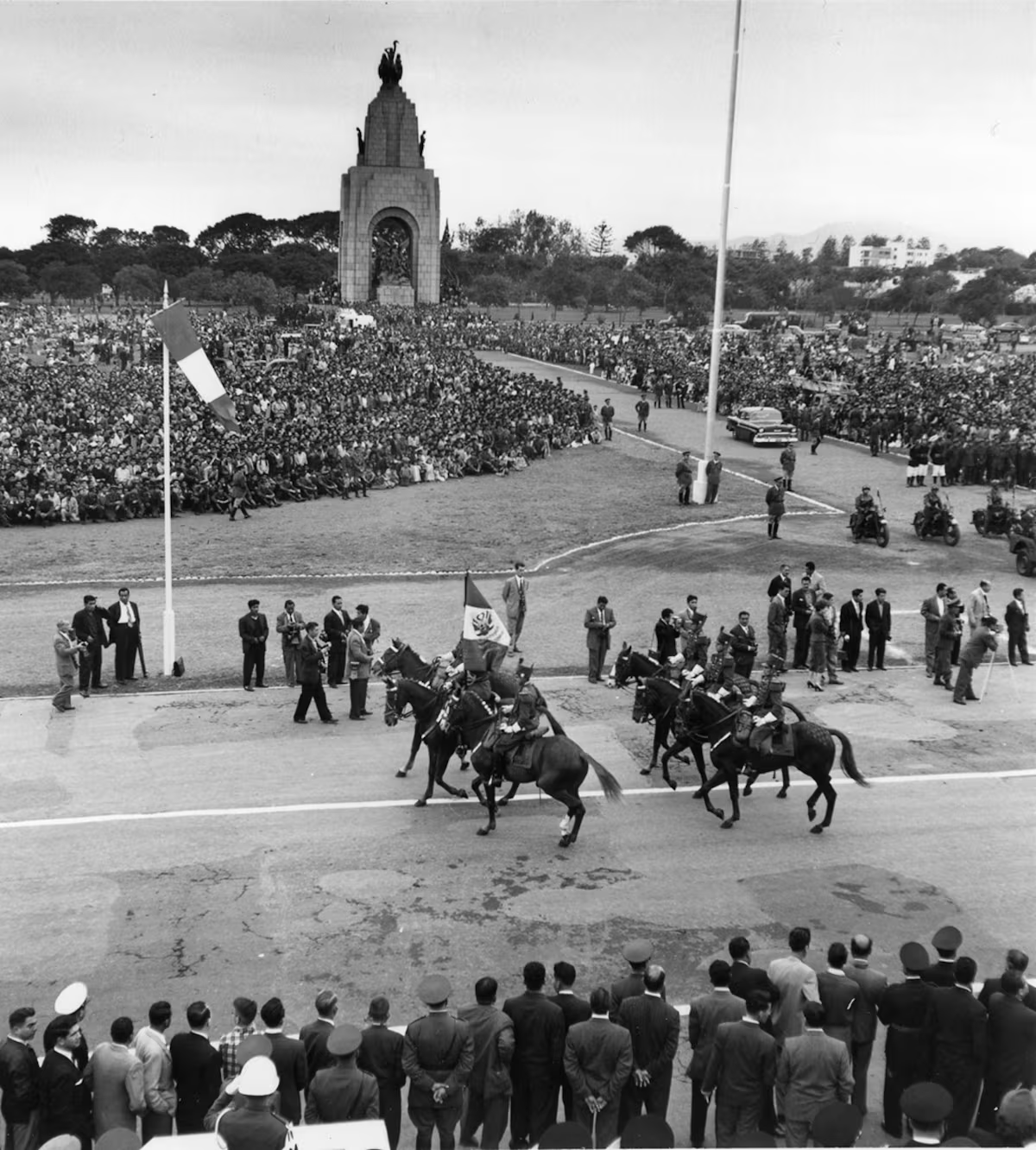
El Campo de Marte Lima: Complete Visitor Guide, Hours, Tickets, and Tips (2025)
Date: 14/06/2025
Introduction
El Campo de Marte, located in Lima’s Jesús María district, stands as one of the city’s largest and most historically significant urban parks. Spanning over 60,000 square meters, this green haven is not just a recreational space but also a living chronicle of Lima’s evolution—from its days as a transportation and sporting hub to its current role as a civic, cultural, and environmental landmark. Visitors will encounter a blend of lush landscapes, impactful memorials, and vibrant social spaces, making this park a must-visit destination for history buffs, families, and anyone looking to experience Lima’s communal spirit (El Comercio; Infobae).
This guide provides comprehensive information on El Campo de Marte’s history, monuments, visitor logistics, and surrounding attractions—ensuring you have all the details needed for a memorable visit.
Table of Contents
- History & Cultural Significance
- Major Monuments and Memorials
- Visiting Information
- Activities & Events
- Nearby Attractions and Travel Tips
- FAQs
- Conclusion
- Sources
History & Cultural Significance
Early Origins and Urban Transformation
The site of El Campo de Marte has played a pivotal role in Lima’s urban story for over a century. Originally part of the Santa Beatriz hacienda and later transformed into Lima’s first airport in 1924, the area quickly became synonymous with progress and connectivity. By the late 1920s, it housed the Hipódromo de Santa Beatriz, an elite racetrack that drew Lima’s upper classes and was the scene of significant national events, including the assassination of President Luis Sánchez Cerro in 1933 (Infobae).
With Lima’s expansion, the area shifted from transport and elite recreation to public use, officially opening as a park in 1933. It was soon designated as a vital “pulmón ecológico” (ecological lung) for the city, providing much-needed green space amid rapid urbanization (El Comercio). In 1968, its status as an “área verde intangible” was cemented by Law Nº 16979, protecting it from future urban encroachment (Lima Gris).
Civic and Memorial Role
Over the decades, El Campo de Marte’s identity evolved into a space for collective memory and civic engagement. Its wide lawns and plazas have hosted everything from Independence Day parades to cultural festivals and community gatherings, reinforcing its status as a communal heart of the city (La República).
Major Monuments and Memorials
Monument to the Fallen of the 1941 War
The Monumento a los Caídos en la Guerra del 41 stands at the center of the park, commemorating Peruvian soldiers who died in the 1941 conflict with Ecuador. Annual ceremonies and military parades are held here, underscoring its importance in Peru’s narrative of sacrifice and national identity (El Comercio).
Jorge Chávez and Other Notables
The park is dotted with statues of national and international figures, including the monument to Jorge Chávez Dartnell, Peru’s pioneering aviator, inaugurated in 1937. There are also tributes to writers, civic leaders, and the Japanese-Peruvian community, such as the Japanese-Peruvian Friendship Bridge, celebrating a century of Japanese immigration (Infobae; Turismo Peruano).
”El Ojo que Llora” (The Eye that Cries)
Perhaps the most poignant memorial in the park, “El Ojo que Llora,” was created by Dutch artist Lika Mutal in 2006. This Zen-inspired labyrinth of stones honors the victims of Peru’s internal conflict from 1980 to 2000, each stone inscribed with a name. It has become a site for reflection, commemoration, and sometimes controversy, reflecting ongoing social debates (Harvard DRCLAS).
Visiting Information
Hours and Entry
- Opening Hours: Daily, from 5:00 AM to 10:00 PM (La República; Turismo Peruano).
- Admission: Free entry for all; no tickets required.
Accessibility
- Physical Access: The park features wide, paved paths and ramps, making it wheelchair- and stroller-friendly. Some older areas have steps or uneven ground, so plan accordingly.
- Restrooms: Public toilets are available, including accessible facilities.
- Seating and Shade: Numerous benches and mature trees offer shaded resting spots.
Facilities and Services
- Sports Areas: Basketball and volleyball courts, soccer fields, jogging paths, and outdoor gym equipment are available on a first-come, first-served basis.
- Children’s Playgrounds: Equipped with safe, modern play structures.
- Food Vendors: Street food stalls and kiosks operate during weekends and events; nearby cafés and restaurants are plentiful in Jesús María.
- Wi-Fi: Free public Wi-Fi is available in select areas, though coverage may be inconsistent.
- Parking: Limited street parking surrounds the park. For convenience, use taxis, ride-hailing apps, or public transport.
Safety and Security
- Security: The park is patrolled by municipal security and police, with surveillance cameras and a monitoring drone recently installed (La República).
- Tips: Exercise standard precautions, especially after dark or during crowded events.
Activities & Events
- Civic Events: Hosts Lima’s Great Military Parade (July 29), Independence Day celebrations, and other national commemorations.
- Cultural Festivals: Regular site for music concerts, food fairs, artisan markets, and art exhibitions.
- Community Activities: Yoga, aerobics, K-Pop gatherings, sports tournaments, and family picnics are common (EnLima.pe; Lima City Kings).
- Guided Tours: Available during major events or by arrangement with local operators; check with Jesús María Municipality for schedules.
Nearby Attractions and Travel Tips
- National Museum of History, Anthropology, and Archaeology: A short walk away, ideal for combining with your park visit.
- Plaza San José: Features cafés and shops.
- Parque de la Reserva: Home to Lima’s Magic Water Circuit.
- Public Transport: Multiple bus lines and the Metropolitano serve the area; the nearest metro station is Estación Matellini (Line 1), followed by a short taxi ride (Lima public transport info).
Travel Tips:
- Visit early or on weekday mornings for a quieter experience.
- Bring sun protection, water, and comfortable footwear.
- Check for scheduled events on the park’s official site or via the Audiala app.
Frequently Asked Questions (FAQ)
Q: What are the park’s opening hours?
A: Daily, from 5:00 AM to 10:00 PM.
Q: Is there an entrance fee?
A: No, entry is free for all visitors.
Q: Are pets allowed?
A: Yes, but they must be leashed. Owners must clean up after their pets.
Q: Is the park accessible for people with disabilities?
A: Most main paths and facilities are accessible.
Q: Can I hold events or picnics in the park?
A: Yes; larger organized events require prior municipal permission.
Q: Are guided tours available?
A: Tours can be arranged through local operators or during major civic events.
Conclusion
El Campo de Marte is more than just a park—it’s a living symbol of Lima’s dynamic history, cultural vibrancy, and communal values. With its blend of historical monuments, ecological significance, and robust civic life, the park offers both locals and visitors a unique space to explore, reflect, and connect with Peru’s capital. Free daily access, inclusive facilities, and a calendar of events ensure that every visit is enriching, whether for leisure, learning, or celebration.
Plan your visit today, and for more tips on Lima’s historical sites, download the Audiala app. Follow us on social media for real-time updates, event alerts, and curated travel guides.
